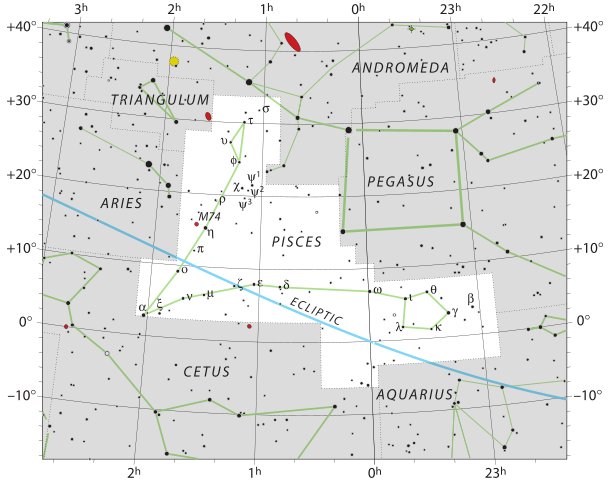5. Close to Heka are φ¹ and φ² Orionis:
... Al Maisān, the title of γ Geminorum, by some error of Firuzabadi was applied to this star [Heka] as Meissa, and is now common for it. Al Sufi called it Al Tahāyī; but Al Ferghani and Al Tizini knew it as Rās al Jauzah, the Head of the Jauzah, which it marks. The original Arabic name, Al Hak'ah, a White Spot, was from the added faint light of the smaller φ¹and φ² in the background, and has descended to us as Heka and Hika. These three stars were another of the Athāfiyy [tripods used for cooking] of the Arabs; and everywhere in early astrology were thought, like all similar groups, to be of unfortunate influence in human affairs. They constituted the Euphratean lunar station Mas-tab-ba-tur-tur, the Little Twins, a title also found for γ and η Geminorum; and individually were important stars among the Babylonians, rising to them with the sun at the summer solstice, and, with α and γ, were known as Kakkab Sar, the Constellation of the King ... Then there is iota Librae to consider:
It is close to the center of the southern bowl:
From the Dolphin constellation the stars γ and δ have to be added to my list:
And lastly there is ζ Piscium:
Revati is very close to the ecliptic:
"ζ, a double 5th and 6.3 magnitude, apparently unnamed, was prominent in Hindu astronomy as marking the initial point of the celestial sphere about the year 572, when it coincided within 10' of longitude with the vernal equinox. It formed part of the Khorasmian lunar station Zidadh, the Sogdian Riwand, and of the 26th nakshatra, Revati, Rich, being the junction star between Revati and Acvini. With ε it was the Persian lunar station Kaht and the Coptic Kuton, Cord." (Allen) |


